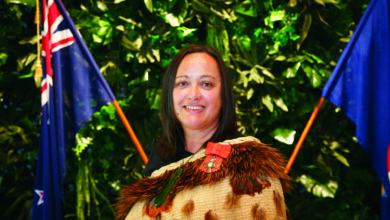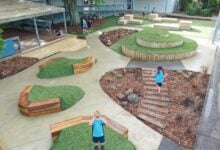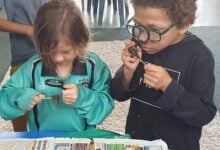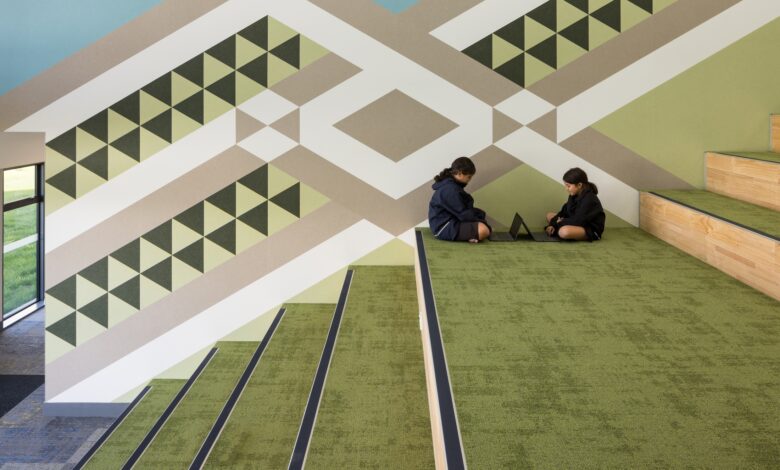
Having an accessible and inclusive classroom is about more than just physical access to a space; it’s about a culture of inclusivity, where differences are not singled out and all students are respected.
An incredible range of abilities, interests, preferences and needs will exist within your classroom. Students should never be made to feel different, or their learning or environment adjustments pointed out. A culture of inclusivity benefits everyone—students of all abilities will be encouraged to work together, think about and value different points of view, and be enthusiastic learners.
Read the latest print edition of School News online HERE.
Communication is a simple first step, and all school staff should make sure they don’t talk down to students with disability or different learning needs, modelling respect for and to other students.
Sometimes, changes will need to be made to assessment or learning. Reasonable adjustments for students should be made in consultation with the student, parent, teacher and other relevant school staff, preferably before the start of the school year. These conversations should be ongoing, with recognition that an adjustment that is needed one year may no longer be necessary the next.
It’s important to remember the need for cultural inclusion. Helping all students to see themselves in learning material helps breed success. Make sure texts and resources represent people of all ages, cultural backgrounds, sizes and shapes.
The classroom: Setting up for success
Classrooms are dynamic spaces, moulding and shifting to fit the day’s activities. And amidst the busyness of the school days, simple changes can help all students better access, understand, and apply information.
Basic accommodations can be worked into everyday classroom practices, for example not speaking with your back to the class if you have students with hearing difficulties, using large, high contrast fonts if you have students with visual impairment, and ensuring furniture is suitable for students with mobility aids.

Learning MATTERS General Manager, Carla McNeil, believes when we talk about inclusion in education, we often focus on curriculum and pedagogy, and overlook the environment itself. “One of the most overlooked tools in supporting learners with specific needs, like dyslexia, is the physical classroom setup. Simple, strategic adjustments can reduce extraneous cognitive load and significantly boost learning outcomes for all students.
“A well-designed classroom helps students focus, reduces anxiety, and allows teaching to be more effective,” Ms McNeil said. “For example, when students face the front—toward the teaching arena—they can see, hear, and process information with fewer distractions. This is critical for learners who are easily overwhelmed by visual clutter or struggle to follow instructions.”
Ms McNeil said teachers can also create clarity and calm by keeping walls clear of excessive displays and reserving space for essential anchor charts that directly support instruction. “A room brimming with artwork may feel warm, but too much visual noise can hinder working memory and focus.
“Clear routines, consistent expectations, and proximity to students are just as important. When teachers are close, they can monitor behaviour, build stronger connections, and provide quick feedback. Setting up partner-pairing arrangements where students can easily turn and talk also supports retrieval and peer learning.
“Inclusion begins with intentional design,” Ms McNeil said. “When we plan classrooms that reduce barriers and support attention, we move one step closer to learning that is truly for all.”
Classroom design should also include practical aspects like adequate lighting and ventilation, and a variety of comfortable furniture to support different preferences
The ability to hear clearly and understand spoken language in the classroom is also essential. Nicola Taylor from Autex Acoustics said: “Research shows that in classrooms without proper acoustic treatment, students may miss up to one in four spoken words. This level of disruption poses a serious barrier to learning, particularly for students with hearing impairments or other learning challenges. Poor acoustics can turn lessons into a series of missed words and lost meaning, which undermines both comprehension and confidence.”
Thoughtful acoustic design helps address this issue by controlling excessive noise and echo in classrooms—creating balanced, peaceful, productive spaces. “By prioritising acoustics, educators can create inclusive spaces where every student has the opportunity to succeed,” Ms Taylor said.
Noise can never be completely eliminated, and nor should it be. Ms Taylor explained: “The goal of acoustic design is to create a space with a high signal-to-noise ratio, meaning the primary sound source—typically a teacher’s voice—can be heard clearly above any background noise.
“In educational settings, acoustic solutions are often provided as tiles or panels, which are easy to transport and install. Some come with strong adhesive backing, allowing for straightforward installation by those with basic trade experience.
“Where possible, specifiers should choose interior acoustic solutions made from 100 percent polyester fibre. This material not only delivers excellent acoustic performance but is also non-toxic, non-allergenic, and free from irritants, making it a safe choice for environments with children.”
Sensory tools: Helping with regulation and engagement
At times, the classroom can become overwhelming for all students—noise, smells, visual stimulus and more can create a sensory overload. Sensory regulation tools can help students manage this, assisting them to calm down, or increase alertness when necessary. They can also be useful in enabling students to transition between tasks, and maintain focus on an activity.
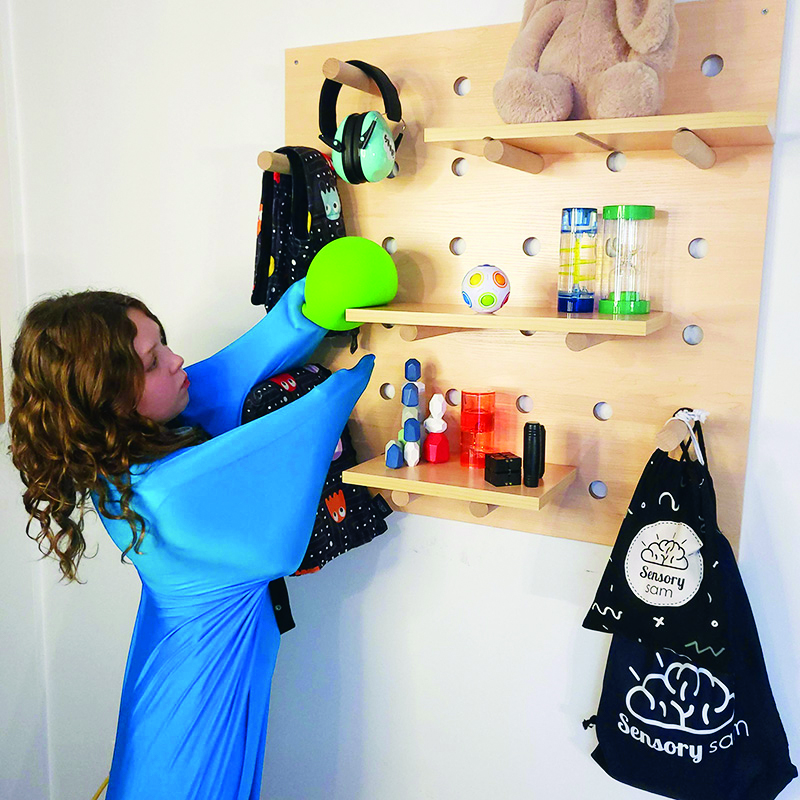
Sensory regulation tools can be integrated into classroom routines to assist all students. Encouraging all students to regularly use sensory tools will normalise these in the classroom, so no student feels singled out, and equally, so no tamariki feel like they are missing out on the sensory fun!
Adam Bazzard from Sensory Sam said ‘learning for all’ means learning that is flexible, predictable, and built on the assumption that diversity is the norm, not the exception. “When we think about inclusive learning spaces, we often focus on things like the curriculum, representation, or physical access. But another important part of inclusion is sensory and emotional accessibility. For many students—especially those who are neurodivergent—traditional classrooms can have hidden barriers that make learning hard.
“For children with sensory processing differences—such as Autism, ADHD, Sensory Processing Disorder or anxiety— unwanted sensory stimuli like the hum or brightness of fluorescent lights, the scrape of chairs on the floor, strong smells or uncomfortable textures can make it hard to focus.
“Sensory overload can cause stress, withdrawal, or meltdowns, not out of defiance, but as a reactionary or coping response,” Mr Bazzard said. “When students are overwhelmed or distracted by unwanted stimuli, learning becomes secondary to simply trying to feel safe and regulated.”
Breaking up the day with body movement sensory games like animal walks, musical statues or ‘Simon says’ help satisfy the sensory vestibular and tactile input that children need, some kids more than others.
This can be complemented with routines to activate the parasympathetic nervous system, like stretching and breathing to calm music, or listening to a short story narration with a meditation music style background. “Using weighted shoulder huggers during independent work time can help every student self-regulate and focus,” Mr Bazzard said. “It’s a great way to normalise kids diverse needs, that is subtle, incognito and you can slip into the day’s routines.
“Short sensory breaks, movement-based learning, access to quiet zones, and utilising calming tools can be normalised as part of the classroom culture, not exceptions for a few. If you consider everyone to be somewhere on a neurodiverse spectrum, sensory resources can be functional to all neuro-types, not just neurodivergents. Adopting this universal approach helps normalise and destigmatise, and aids in the engagement of these tools in the classroom.”
Mr Bazzard said there are a wide range of sensory tools available, with the goal of promoting calm, increasing focus, and encouraging self-regulation. “Kits or Kete bins with a range of these tools are available, and are popular for sharing amongst teacher colleagues, SENCO or one for each classroom. Fidgets, muffs, weighted items and cosy blackout tents are some examples of useful resources for an inclusive classroom.”
Assistive technologies: An extra helping hand
For some students, assistive technologies will provide unparallelled benefits for learning success.
Chris O’Hara from Link Assistive said assistive technologies (AT) are pivotal in fostering equitable access in education. “For expressive communication, options ranging from simple voice output switches or paper-based communication systems to sophisticated AAC devices, empower students to share their thoughts and effectively engage in classroom activities.
“Receptive challenges can be supported with options such as text-to-speech software or the use of visual supports, which can complement structured literacy approaches. Physical access is enhanced through a myriad of options including low tech alternative pencils, speech recognition software, ergonomic keyboards, adaptive mice, switch access, and accessible furniture, ensuring active participation.”
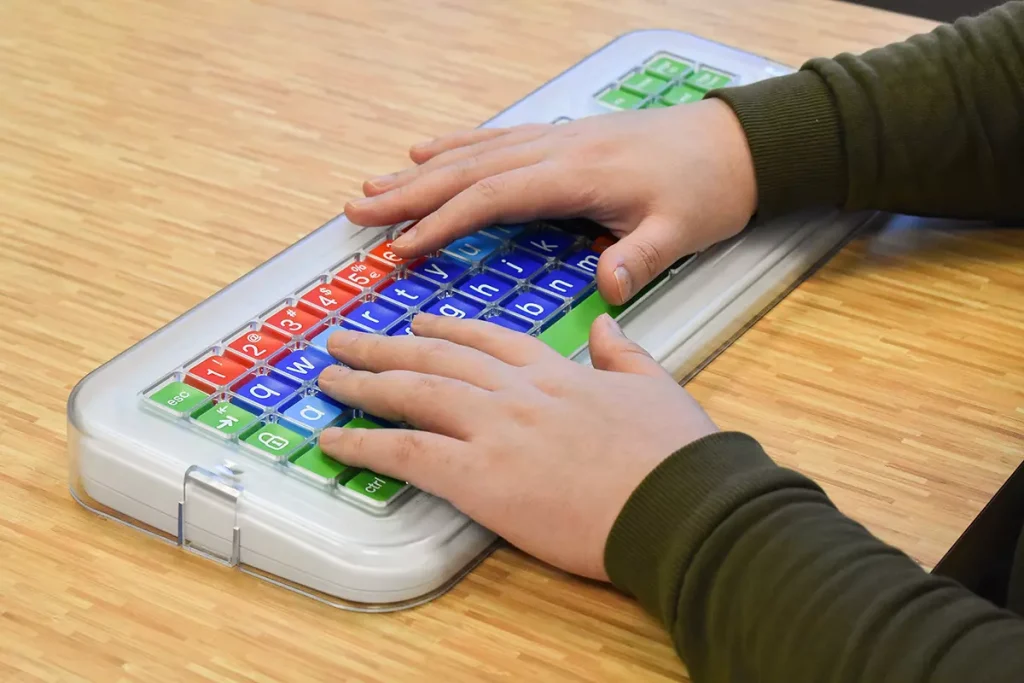
However, the efficacy of AT hinges on confident educators and solutions that work within real world classroom environments, Mr O’Hara cautions. “The roll out of the Structured Literacy approach and potential access to funding and training to support its implementation, provides an ideal opportunity for schools to reexamine how they can best support the diverse needs of their students, and identify training and support opportunities available through equipment suppliers, therapy services and so on.
“Prioritising ongoing professional development, providing hands-on training, peer mentoring, and readily available technical support ensures teachers and support staff are not just users, but champions of these transformative tools, and able to truly embrace diversity in every learning space.”
Beyond the classroom: Welcoming everyone, everywhere
Inclusivity and accessibility should not be confined to the classroom; every area of your school must be welcoming and safe for all students. Consider, for example, washroom cubicles that include grab rails, and are wide enough to accommodate a wheelchair.
Quiet spaces should be available during recess and lunchtime for students who can experience sensory overload during these times. Importantly, students and staff should be able to navigate all areas of your school without using stairs. Wide, even pathways that are kept free of trip and slip hazards can facilitate this. Including tactile markings for people with low vision can improve functionality.
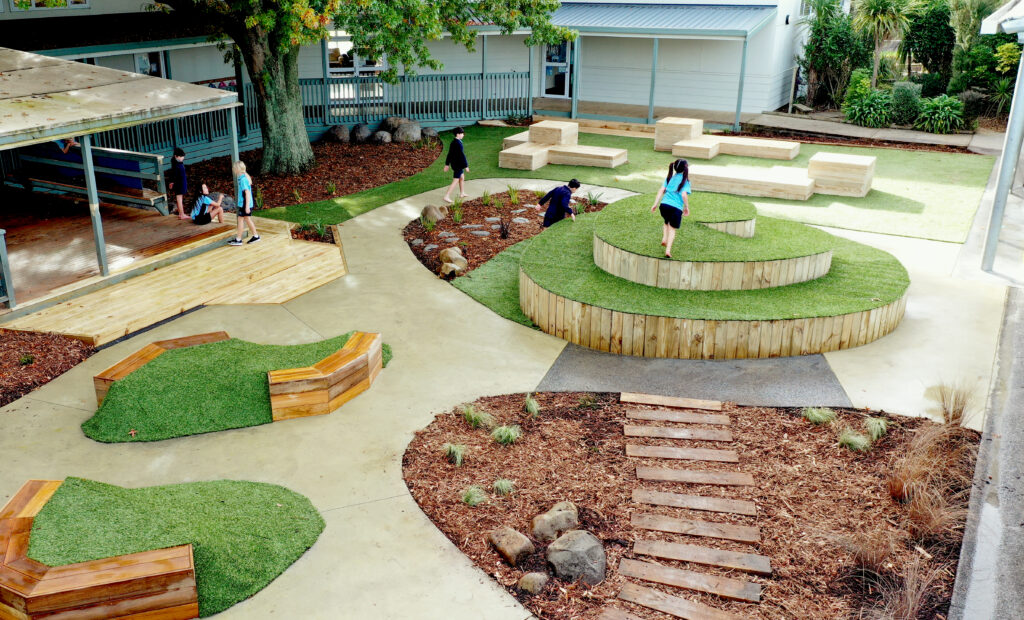
Abbey Hull from Playscape believes every child deserves a space where they can belong, explore, and thriv—and nature makes that possible. “Nature-rich spaces have the power to transform how children play, learn, and connect with the world around them.
“Play spaces designed with natural elements and keeping the fun factor firmly in mind, spark curiosity and offer a sense of wellbeing and engagement. Sensory features and natural textures help create calming and enriching environments, allowing children to connect with other students or find quiet, contemplative zones for emotional development and imaginative learning.
“Nature-based play encourages open-ended exploration through varied terrain and the use of organic materials such as logs, rocks, stones and plants. Accessible features like raised garden beds, natural pathways, and quiet nooks ensure all children—regardless of mobility or sensory needs—can fully participate while discovering through play and observation.
“Culturally inclusive spaces deepen a child’s sense of identity and belonging,” Ms Hull said. “Outdoor environments can reflect local stories, legends, symbols or geography, woven into the design through collaboration and connection, and conveying community values. Drawing on these elements for an outdoor space helps children foster a strong sense of place and understanding of the environment.
“By designing to encourage curiosity and discovery, diverse outdoor learning landscapes nurture confidence, creativity, and allow empathy for each other.”


